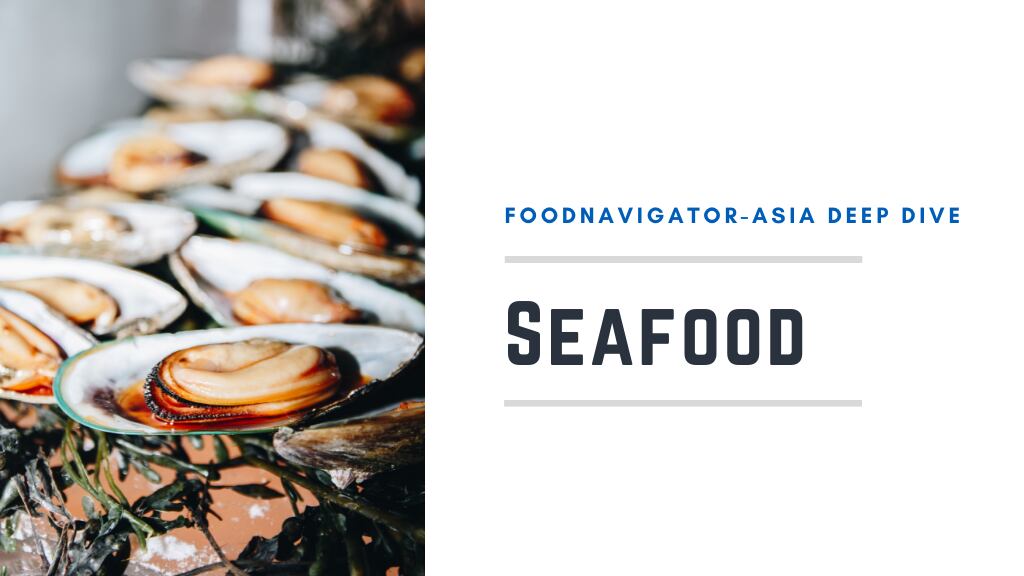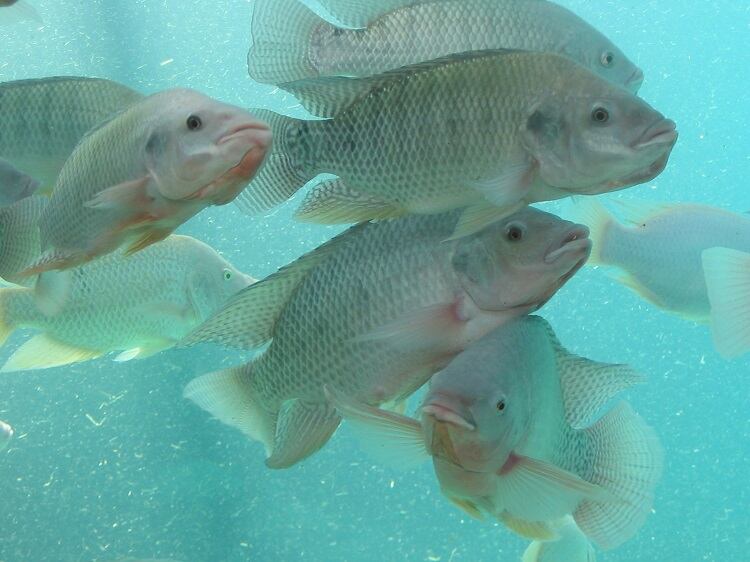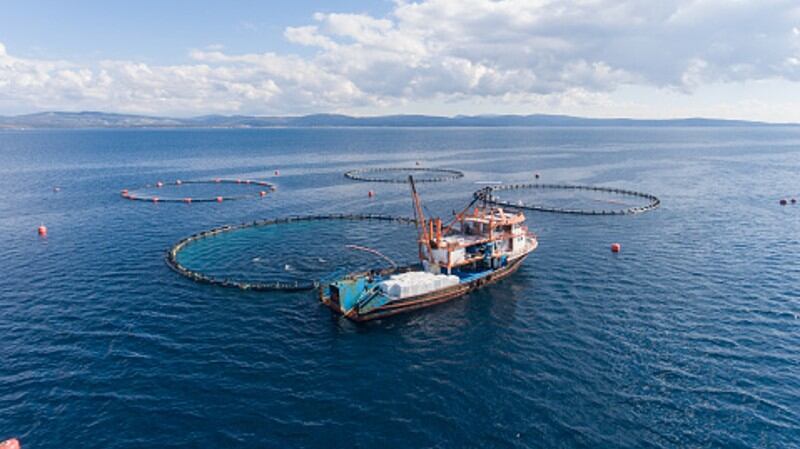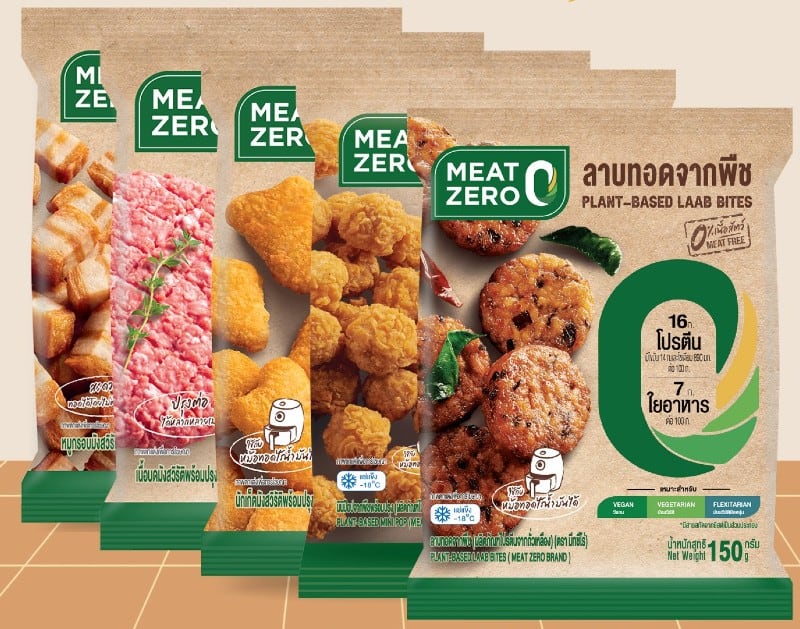Firms in the Asia Pacific seafood sector are pushing sustainable practices from raising credibility to alternative seafood production methods as a key requirement for the region’s seafood sector to retain consumer confidence and thrive moving forward.
In this edition of the FNA Deep Dive, we are taking a closer look at the seafood industry in the APAC region and speak to leading firms from both the traditional and alternative seafood production sectors to find out more.
In general, significant growth is expected for the region’s seafood industry in terms of value, to US$107.4bn in value by 2027 from US$85.8bn in 2019.
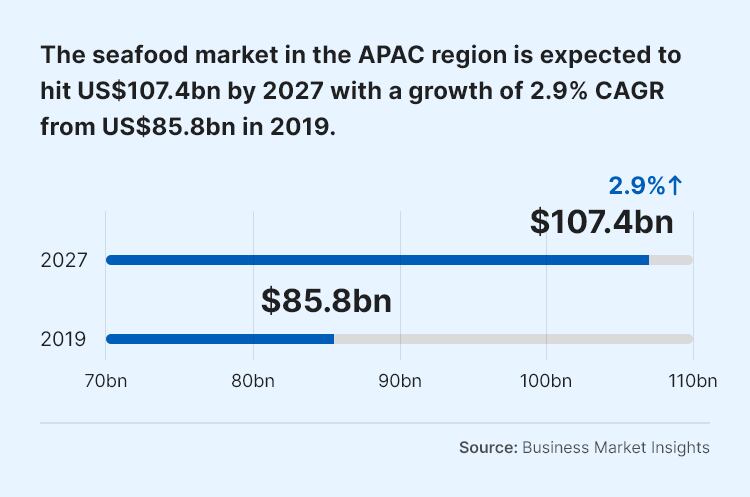
Asia has always been a large consumer of seafood, widely considered the largest in the world, but across the region various local seafood industries have fallen victim to various issues impacting consumer trust, from seafood fraud cases to food safety and contamination concerns.
Many seafood product firms that are already established within the industry believe that the answer to solving this issue and further growing the seafood sector in APAC lies in providing transparent proof of their sustainable supply chains to consumers, so as to prove the credibility of their processes beyond doubt.
Amongst the big names that subscribe to this belief are seafood industry giants Thai Union and CP Foods. CP Foods in particular has strongly linked the health and food safety aspects of its seafood products to its sustainability strategies, with a strong emphasis on areas such as preventing antibiotic resistance and water waste reduction.
“CP Foods advocates sustainability best practices [including] optimised resource utilisation, environmental rehabilitation, social balance [and above all] consumer health,” CP Foods Senior Vice President for Corporate Social Responsibility and Sustainable Development Wuthichai Sithipreedanant told us.
“[We have placed] emphasis on the R&D of food innovations to offer nutritional values for global consumers’ good health [and] digitisation [of] our systems [to] reduce business risks but enhance efficiency.”
According to the firm’s data, one of its major seafood sustainability goals has been to ensure that no products with antibiotic-resistance potential enter the food supply chain, as this is one of consumers’ biggest concerns when it comes to seafood contamination.
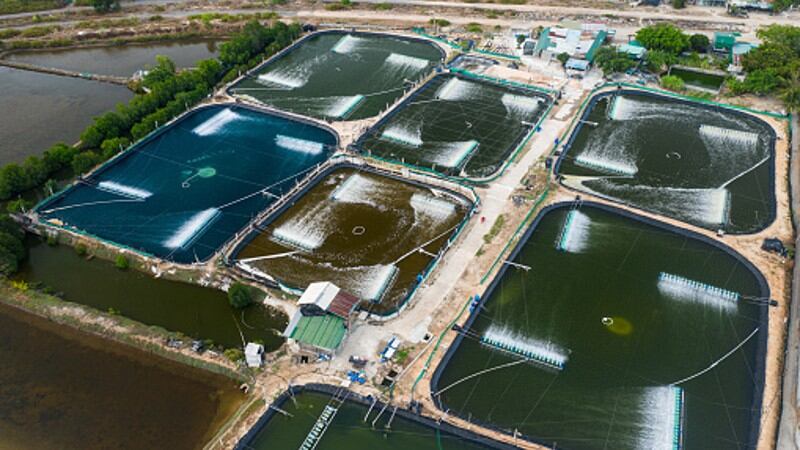
“CPF recognizes that improper use of antibiotics in animals have tremendous impacts on the animals, their caretakers, consumers and the environment [and] could especially create antimicrobial resistance and antibiotic residues in animal products, all of which have proven to be global challenges,” said the firm.
“[Our] Contract Farming Scheme has stipulated that any use of antibiotics must be for therapeutic uses to maintain animal welfare under veterinary prescription only and must [adhere to our standards and be] free from hormones used as a growth promotor.
“[To ensure consumer safety], in 2021 we conducted R&D on our seafood products including a study on the dynamics of antibiotic resistance genes in aquaculture together with Mahidol University
“[Here], samples of Nile tilapia or red tilapia, snapper, shrimp and biofloc collected from [CPF’s] aquaculture were compared to natural fish and shrimp close to the sample group to study possible translocation of antibiotic resistance genes in aquaculture [and check that the safety of the seafood supply chain was not being affected.”
Other sustainability initiatives the firm has taken includes the use of a Recirculating Aquaculture System (RAS) in its shrimp farms to treat and recycle used water, reducing external water use by 75%; as well as a CARE System in fish farms which treats and recycles used water to reduce external water use by 80%.
On the other hand, Thai Union has focused a lot on the sustainability of its fish supply, and demonstrated a strong focus on this for its seafood products by taking the additional step of partnering NGO Sustainable Fisheries Project (SFP) and opening up its supply chain for auditing under SFP’s globally acclaimed Seafood Metrics system in order to do this.
“Consumers today are increasingly concerned with the sourcing and sustainability of the seafood they are getting in the products we make and sell to them, [under brands from John West to Chicken of the Sea], so we need to provide them with more transparency about our supply chain and processes,” Thai Union Group Director for Sustainability Adam Brennan told FoodNavigator-Asia.
“The partnership with SFP means we will be providing all the necessary supply chain data to them to evaluate for evaluation using the Seafood Metrics system [and] we believe that doing this will provide the transparency needed to [inspire an added level of] trust in our consumers [to continue buying our products] with confidence.”
Cultivated seafood to the rescue?
While firms in the conventional seafood space are pumping up efforts to maximise sustainability in hopes of boosting consumer confidence, over in the alternative protein space, cultivated seafood has emerged as one of the fastest-growing sectors, securing millions of dollars in funding in 2021.
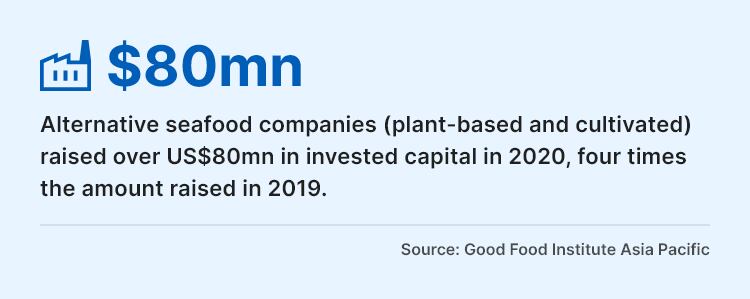
Cultivated seafood firms boast a faster, cleaner, more efficient and more sustainable means of ‘real’ seafood production using bioreactors, and one of the undeniable industry pioneers in this space is cultivated crustacean-focused Shiok Meats.
According to Shiok Meats Group CEO and Co-Founder Sandhya Sriram, it has become undeniable that cultivated seafood is no longer in the ‘nice-to-have’ stage, but now has progressed into the ‘need-to-have’ stage as an alternative protein.
“The cultivated sector is no longer the future - it is the present,” Sriram told FoodNavigator-Asia.
“Right now in Singapore we can already see that consumers can walk into [a restaurant] and buy a cultivated chicken product to eat – I’m hoping that by the end of next year, this will be the same for a shrimp product from Shiok Meats.
“But it is quite clear that at this point, things have changed enough from two years ago before the pandemic that the need cultivated seafood to be mainstream is no longer in a couple of decades, but closer to like tomorrow - I think the need [for good clean protein] is now at the stage that it’s not just a good-to-have, it's a need-to-have.”
Indeed, so many firms share Sriram’s belief that there are numerous such cultivated seafood companies appearing all over the world – so much so that she believes that consolidations are on the horizon, a good sign of the industry maturing.
“[The cultivated seafood sector] is getting a bit too crowded at the moment so I would say that I definitely see that in the next couple of years, we're going to see some consolidation,” she said.
“We're going to see that top eight or 10 players sort of shine and bring their products to market and consumers liking that - and yes, I'm sure Shiok Meat will be one of them – but overall I do think it's a positive outlook for all of us.”
Watch the video below to find out more.
Plant-based very welcome
Although cultivated seafood as an alternative seafood source is an innovative and potentially industry-changing area, it is undeniable that the sector still has a ways to go before it can reach the scale needed to really make a change in the market share and demand for conventional seafood – which would mean limited impact to the pressure on the seafood supply chain in the short term.
“The first challenge [for cultivated seafood] is the whole scale of the industry - We're talking about a multi-billion dollar industry producing multi-trillion tonnes of meat or seafood every year,” said Sriram.
“For us to make a mark in that industry and sort of make this product mainstream, that still keeps me up at night.”
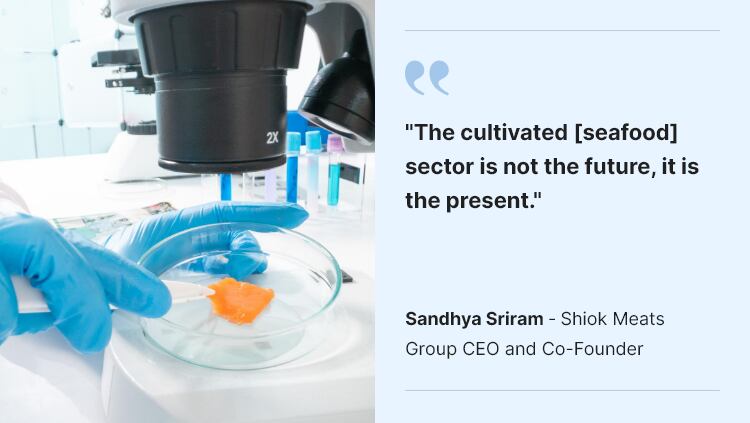
But for alternative seafood as a whole, there are many firms which are starting to realise the value of these alternative seafood sources as a means to not just raise sustainability credentials but also so widen their consumer base to include previously unreachable demographics such as vegans and vegetarians.
Indeed, many firms have started to develop their own alternative protein lines and incorporating these as part of their sustainability strategies, such as Thai Union with its OMG Meat range that has plant-based seafood products such as crab dumplings, crab meat, fish nuggets, tuna, shrimp dumplings and so on.
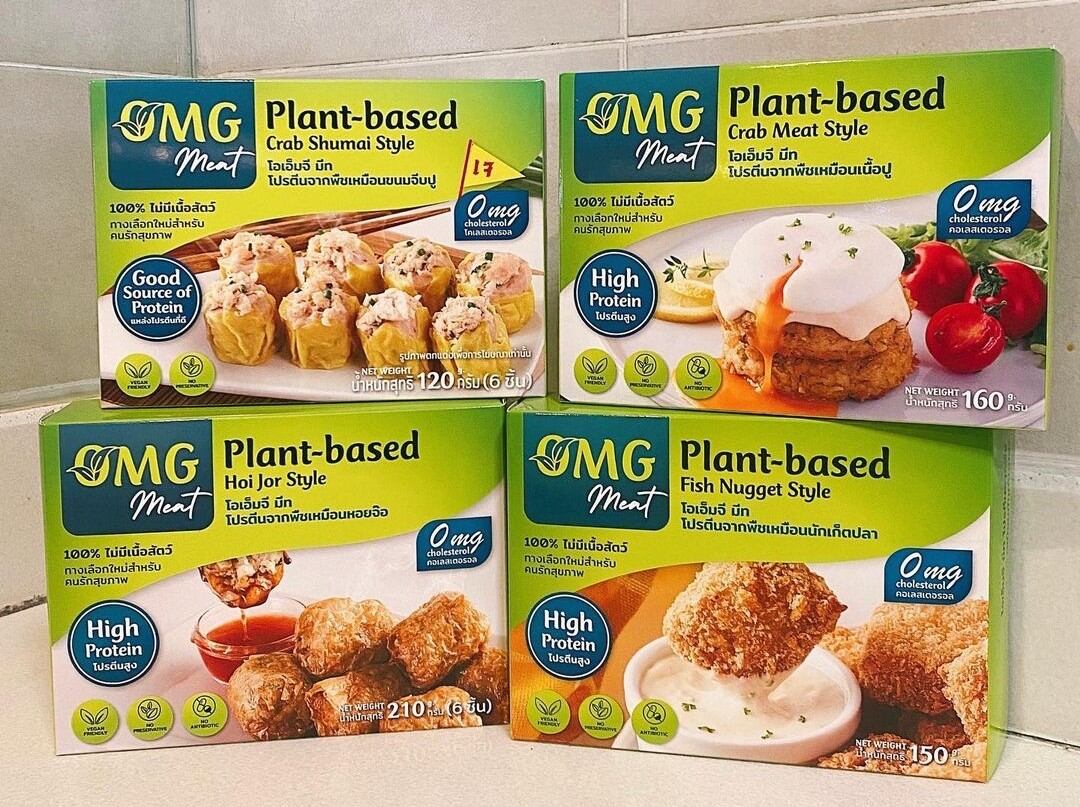
“There is a very strong connection between alternative protein and sustainability, as these address issues such as food security and the provision of diverse protein sources for consumers,” Brennan added.
“As the population in Asia Pacific grows, the pressure on the food system is increasing, so diverse protein sources are becoming ever more crucial to ensure sustainability of the food system. The same applies to the seafood sector – and here alternative seafood has a strong role to play [so] Thai Union is investing a lot into further innovation in this area.”
Plant-based brand OmniFoods concurs, with Founder David Yeung so confident in the potential of plant-based seafood that he launched a line specially dedicated to this, dubbed OmniSeafood, earlier this year.
“Many consumers today, and particularly younger consumers see food brands that place emphasis on wellness and saving the climate – brand with a sustainability focus – as a new status symbol of sorts,” Yeung said.
“Even the government of China has already signalled that alternative protein is going to be part of the national Five-Year Plan, which [is a] good signal of things to come.
“Markets in the west currently already have existing demand for alternative seafood and other proteins, so there is higher penetration there than in Asia – and to overcome this we just need to find a way to fill the gaps and localise and customise products according to each market to maximise local appeal, remembering that there is no one-size-fits-all strategy.”
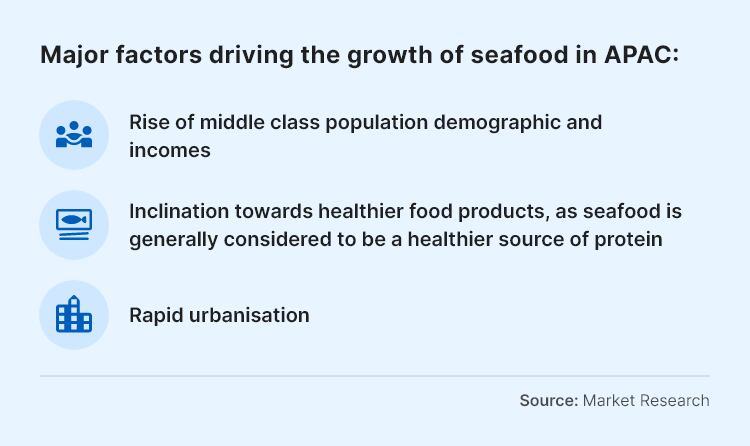
Other ways to maximise consumer appeal
Alternative seafood sources aside, another way that conventional seafood firms are utilising in order to draw in consumers is to make products from a source of fish that Asian consumers already have strong confidence in – such as pioneering salmon jerky brand uFisheries.
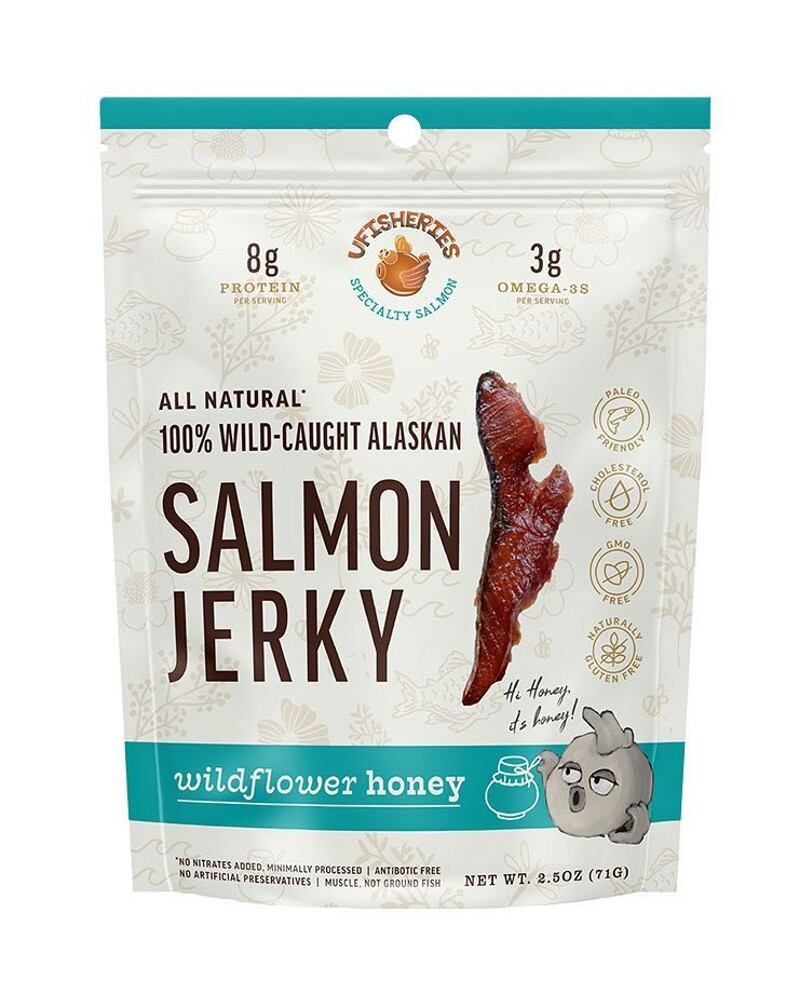
With a promise to use only wild-caught salmon from Alaskan waters, uFisheries Founder Julie Wong believes that this unique proposition will appeal to Asian consumers looking for a healthy yet convenient way to consume seafood.
“Seafood snacks are nothing new to Asia, as most consumers would be familiar with things like keropok (deep-fried crackers made with flour and fish or shrimp meat) or ikan bilis (fried anchovies) – but little thought has been given to the provenance and quality of the seafood used for these, [despite the concern over safety issues for fresh seafood],” she told us.
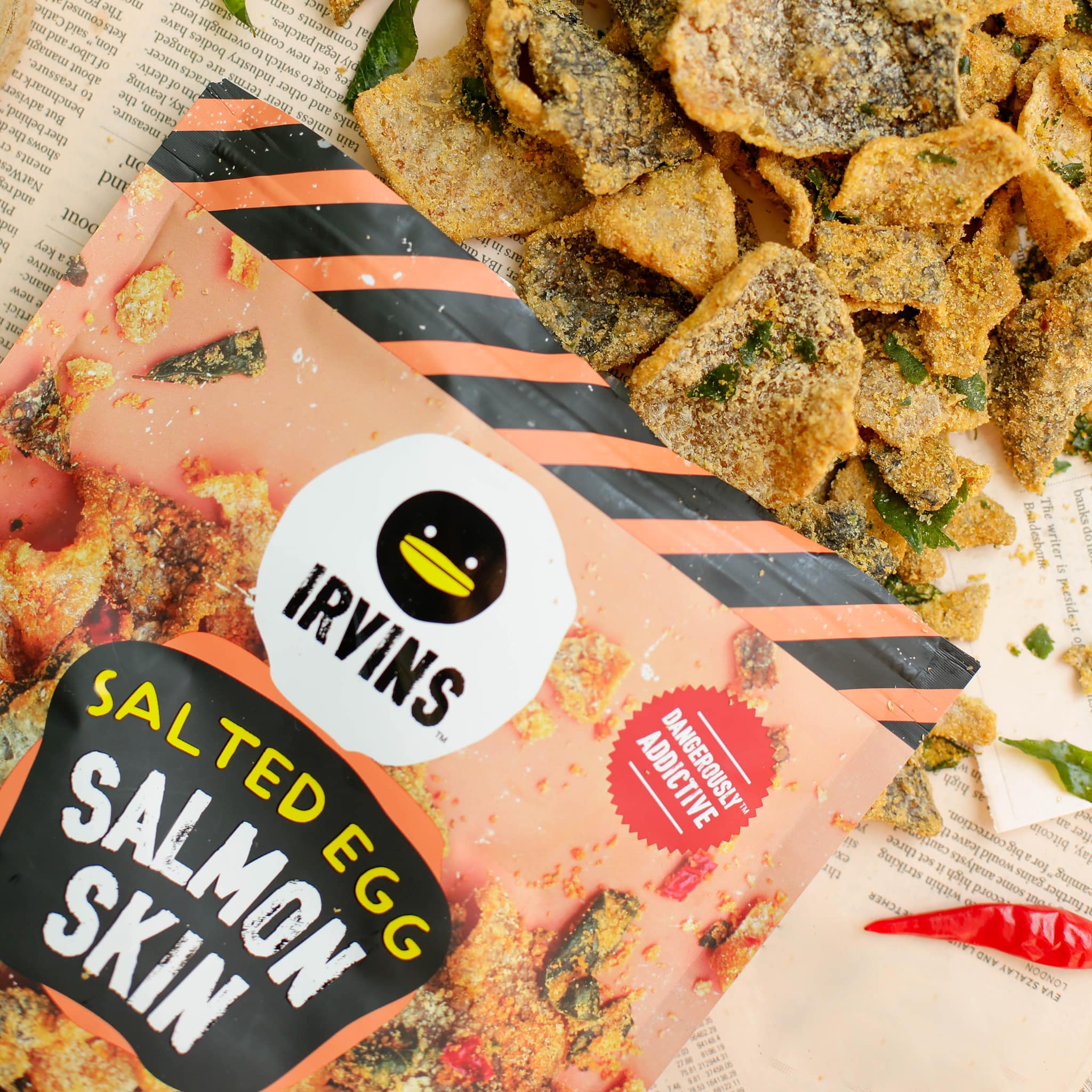
“But it is only a matter of time before this becomes a concern here in Asia too, and questions start coming in about the sustainability and traceability of the fish used in our products – and given the good reputation [of Alaska and salmon], we will be ready for this.”
Even globally-acclaimed salted egg snacks firm Irvins has hopped on the sustainability wagon with its best-selling salmon skin products.
“Irvins Salted Egg Salmon Skin only uses upcycled, sustainably-sourced salmon skin [that is] rich in marine collagen, omega-3’s, and 8g of protein,” the firm said via an email statement.
“[Our in-house process] also means that in addition to ensuring every piece of salmon skin is crispy, this snack is also low-carb and keto-friendly.”
But the brand’s real claim to fame has to be the salted egg flavour it made to blend in with the salmon skin – a blend of bird’s eye chilli, salt-brined duck egg yolks, and fresh curry leaves – proving that in addition to sustainability credentials, finding the right flavours to complement any seafood snack should be the priority of any seafood firm.
This sentiment was echoed by Wong, who highlighted that uFisheries will also be bringing its salmon jerky to Asia in three unique flavours to appeal to local consumers, which are Wildflower Honey, Cranberry Maple Syrup and Spicy Jamaican Jerk.
“We understand that flavours and taste are very important to get right in Asia, so definitely plan to adjust the flavour profiles according to local tastes and demands moving forward,” she said.


